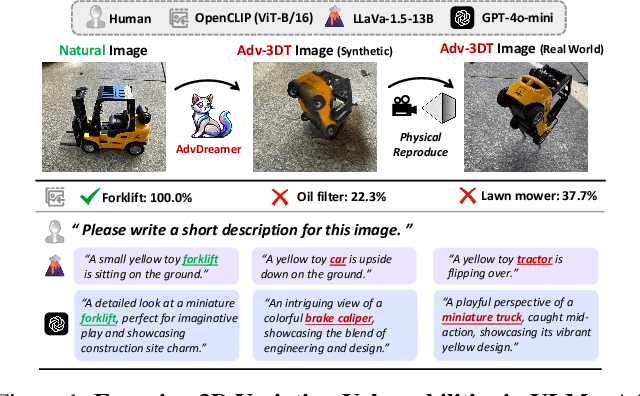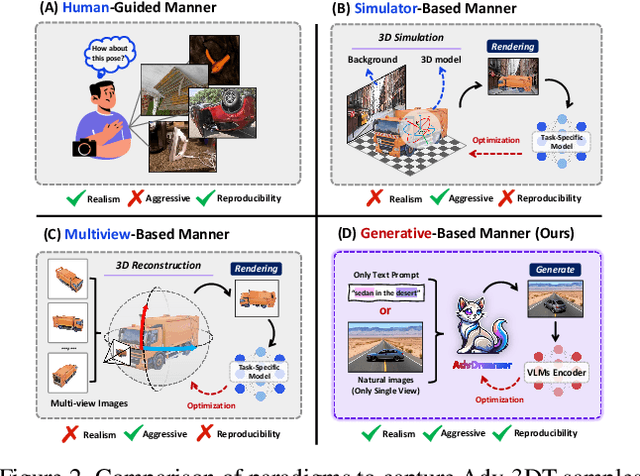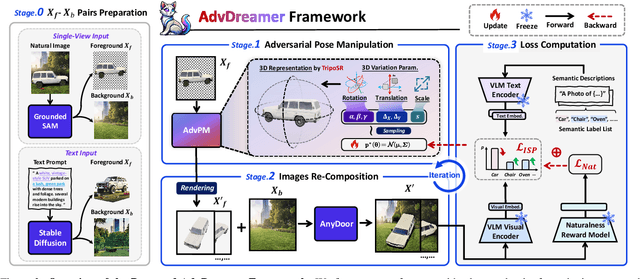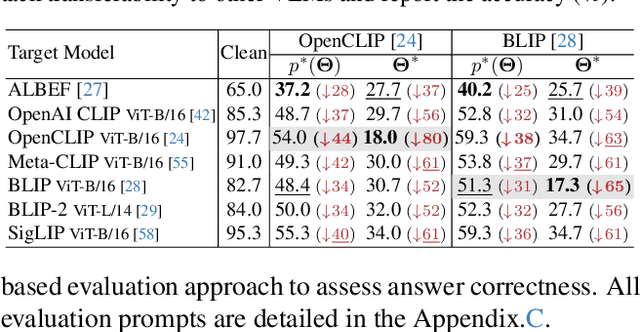Yao Huang
Mitigating Overthinking in Large Reasoning Models via Manifold Steering
May 28, 2025Abstract:Recent advances in Large Reasoning Models (LRMs) have demonstrated remarkable capabilities in solving complex tasks such as mathematics and coding. However, these models frequently exhibit a phenomenon known as overthinking during inference, characterized by excessive validation loops and redundant deliberation, leading to substantial computational overheads. In this paper, we aim to mitigate overthinking by investigating the underlying mechanisms from the perspective of mechanistic interpretability. We first showcase that the tendency of overthinking can be effectively captured by a single direction in the model's activation space and the issue can be eased by intervening the activations along this direction. However, this efficacy soon reaches a plateau and even deteriorates as the intervention strength increases. We therefore systematically explore the activation space and find that the overthinking phenomenon is actually tied to a low-dimensional manifold, which indicates that the limited effect stems from the noises introduced by the high-dimensional steering direction. Based on this insight, we propose Manifold Steering, a novel approach that elegantly projects the steering direction onto the low-dimensional activation manifold given the theoretical approximation of the interference noise. Extensive experiments on DeepSeek-R1 distilled models validate that our method reduces output tokens by up to 71% while maintaining and even improving the accuracy on several mathematical benchmarks. Our method also exhibits robust cross-domain transferability, delivering consistent token reduction performance in code generation and knowledge-based QA tasks. Code is available at: https://github.com/Aries-iai/Manifold_Steering.
Breaking the Ceiling: Exploring the Potential of Jailbreak Attacks through Expanding Strategy Space
May 28, 2025Abstract:Large Language Models (LLMs), despite advanced general capabilities, still suffer from numerous safety risks, especially jailbreak attacks that bypass safety protocols. Understanding these vulnerabilities through black-box jailbreak attacks, which better reflect real-world scenarios, offers critical insights into model robustness. While existing methods have shown improvements through various prompt engineering techniques, their success remains limited against safety-aligned models, overlooking a more fundamental problem: the effectiveness is inherently bounded by the predefined strategy spaces. However, expanding this space presents significant challenges in both systematically capturing essential attack patterns and efficiently navigating the increased complexity. To better explore the potential of expanding the strategy space, we address these challenges through a novel framework that decomposes jailbreak strategies into essential components based on the Elaboration Likelihood Model (ELM) theory and develops genetic-based optimization with intention evaluation mechanisms. To be striking, our experiments reveal unprecedented jailbreak capabilities by expanding the strategy space: we achieve over 90% success rate on Claude-3.5 where prior methods completely fail, while demonstrating strong cross-model transferability and surpassing specialized safeguard models in evaluation accuracy. The code is open-sourced at: https://github.com/Aries-iai/CL-GSO.
Understanding Pre-training and Fine-tuning from Loss Landscape Perspectives
May 23, 2025Abstract:Recent studies have revealed that the loss landscape of large language models resembles a basin, within which the models perform nearly identically, and outside of which they lose all their capabilities. In this work, we conduct further studies on the loss landscape of large language models. We discover that pre-training creates a "basic capability" basin, and subsequent fine-tuning creates "specific capability" basins (e.g., math, safety, coding) within the basic capability basin. We further investigate two types of loss landscapes: the most-case landscape (i.e., the landscape along most directions) and the worst-case landscape (i.e., the landscape along the worst direction). We argue that as long as benign fine-tuning remains within the most-case basin, it will not compromise previous capabilities. Similarly, any fine-tuning (including the adversarial one) that stays within the worst-case basin would not compromise previous capabilities. Finally, we theoretically demonstrate that the size of the most-case basin can bound the size of the worst-case basin and the robustness with respect to input perturbations. We also show that, due to the over-parameterization property of current large language models, one can easily enlarge the basins by five times.
Decoupled Geometric Parameterization and its Application in Deep Homography Estimation
May 22, 2025



Abstract:Planar homography, with eight degrees of freedom (DOFs), is fundamental in numerous computer vision tasks. While the positional offsets of four corners are widely adopted (especially in neural network predictions), this parameterization lacks geometric interpretability and typically requires solving a linear system to compute the homography matrix. This paper presents a novel geometric parameterization of homographies, leveraging the similarity-kernel-similarity (SKS) decomposition for projective transformations. Two independent sets of four geometric parameters are decoupled: one for a similarity transformation and the other for the kernel transformation. Additionally, the geometric interpretation linearly relating the four kernel transformation parameters to angular offsets is derived. Our proposed parameterization allows for direct homography estimation through matrix multiplication, eliminating the need for solving a linear system, and achieves performance comparable to the four-corner positional offsets in deep homography estimation.
Towards NSFW-Free Text-to-Image Generation via Safety-Constraint Direct Preference Optimization
Apr 19, 2025Abstract:Ensuring the safety of generated content remains a fundamental challenge for Text-to-Image (T2I) generation. Existing studies either fail to guarantee complete safety under potentially harmful concepts or struggle to balance safety with generation quality. To address these issues, we propose Safety-Constrained Direct Preference Optimization (SC-DPO), a novel framework for safety alignment in T2I models. SC-DPO integrates safety constraints into the general human preference calibration, aiming to maximize the likelihood of generating human-preferred samples while minimizing the safety cost of the generated outputs. In SC-DPO, we introduce a safety cost model to accurately quantify harmful levels for images, and train it effectively using the proposed contrastive learning and cost anchoring objectives. To apply SC-DPO for effective T2I safety alignment, we constructed SCP-10K, a safety-constrained preference dataset containing rich harmful concepts, which blends safety-constrained preference pairs under both harmful and clean instructions, further mitigating the trade-off between safety and sample quality. Additionally, we propose a Dynamic Focusing Mechanism (DFM) for SC-DPO, promoting the model's learning of difficult preference pair samples. Extensive experiments demonstrate that SC-DPO outperforms existing methods, effectively defending against various NSFW content while maintaining optimal sample quality and human preference alignment. Additionally, SC-DPO exhibits resilience against adversarial prompts designed to generate harmful content.
RealSafe-R1: Safety-Aligned DeepSeek-R1 without Compromising Reasoning Capability
Apr 14, 2025



Abstract:Large Reasoning Models (LRMs), such as OpenAI o1 and DeepSeek-R1, have been rapidly progressing and achieving breakthrough performance on complex reasoning tasks such as mathematics and coding. However, the open-source R1 models have raised safety concerns in wide applications, such as the tendency to comply with malicious queries, which greatly impacts the utility of these powerful models in their applications. In this paper, we introduce RealSafe-R1 as safety-aligned versions of DeepSeek-R1 distilled models. To train these models, we construct a dataset of 15k safety-aware reasoning trajectories generated by DeepSeek-R1, under explicit instructions for expected refusal behavior. Both quantitative experiments and qualitative case studies demonstrate the models' improvements, which are shown in their safety guardrails against both harmful queries and jailbreak attacks. Importantly, unlike prior safety alignment efforts that often compromise reasoning performance, our method preserves the models' reasoning capabilities by maintaining the training data within the original distribution of generation. Model weights of RealSafe-R1 are open-source at https://huggingface.co/RealSafe.
When Lighting Deceives: Exposing Vision-Language Models' Illumination Vulnerability Through Illumination Transformation Attack
Mar 10, 2025



Abstract:Vision-Language Models (VLMs) have achieved remarkable success in various tasks, yet their robustness to real-world illumination variations remains largely unexplored. To bridge this gap, we propose \textbf{I}llumination \textbf{T}ransformation \textbf{A}ttack (\textbf{ITA}), the first framework to systematically assess VLMs' robustness against illumination changes. However, there still exist two key challenges: (1) how to model global illumination with fine-grained control to achieve diverse lighting conditions and (2) how to ensure adversarial effectiveness while maintaining naturalness. To address the first challenge, we innovatively decompose global illumination into multiple parameterized point light sources based on the illumination rendering equation. This design enables us to model more diverse lighting variations that previous methods could not capture. Then, by integrating these parameterized lighting variations with physics-based lighting reconstruction techniques, we could precisely render such light interactions in the original scenes, finally meeting the goal of fine-grained lighting control. For the second challenge, by controlling illumination through the lighting reconstrution model's latent space rather than direct pixel manipulation, we inherently preserve physical lighting priors. Furthermore, to prevent potential reconstruction artifacts, we design additional perceptual constraints for maintaining visual consistency with original images and diversity constraints for avoiding light source convergence. Extensive experiments demonstrate that our ITA could significantly reduce the performance of advanced VLMs, e.g., LLaVA-1.6, while possessing competitive naturalness, exposing VLMS' critical illuminiation vulnerabilities.
STAIR: Improving Safety Alignment with Introspective Reasoning
Feb 04, 2025



Abstract:Ensuring the safety and harmlessness of Large Language Models (LLMs) has become equally critical as their performance in applications. However, existing safety alignment methods typically suffer from safety-performance trade-offs and the susceptibility to jailbreak attacks, primarily due to their reliance on direct refusals for malicious queries. In this paper, we propose STAIR, a novel framework that integrates SafeTy Alignment with Itrospective Reasoning. We enable LLMs to identify safety risks through step-by-step analysis by self-improving chain-of-thought (CoT) reasoning with safety awareness. STAIR first equips the model with a structured reasoning capability and then advances safety alignment via iterative preference optimization on step-level reasoning data generated using our newly proposed Safety-Informed Monte Carlo Tree Search (SI-MCTS). We further train a process reward model on this data to guide test-time searches for improved responses. Extensive experiments show that STAIR effectively mitigates harmful outputs while better preserving helpfulness, compared to instinctive alignment strategies. With test-time scaling, STAIR achieves a safety performance comparable to Claude-3.5 against popular jailbreak attacks. Relevant resources in this work are available at https://github.com/thu-ml/STAIR.
PaMMA-Net: Plasmas magnetic measurement evolution based on data-driven incremental accumulative prediction
Jan 23, 2025



Abstract:An accurate evolution model is crucial for effective control and in-depth study of fusion plasmas. Evolution methods based on physical models often encounter challenges such as insufficient robustness or excessive computational costs. Given the proven strong fitting capabilities of deep learning methods across various fields, including plasma research, this paper introduces a deep learning-based magnetic measurement evolution method named PaMMA-Net (Plasma Magnetic Measurements Incremental Accumulative Prediction Network). This network is capable of evolving magnetic measurements in tokamak discharge experiments over extended periods or, in conjunction with equilibrium reconstruction algorithms, evolving macroscopic parameters such as plasma shape. Leveraging a incremental prediction approach and data augmentation techniques tailored for magnetic measurements, PaMMA-Net achieves superior evolution results compared to existing studies. The tests conducted on real experimental data from EAST validate the high generalization capability of the proposed method.
AdvDreamer Unveils: Are Vision-Language Models Truly Ready for Real-World 3D Variations?
Dec 04, 2024



Abstract:Vision Language Models (VLMs) have exhibited remarkable generalization capabilities, yet their robustness in dynamic real-world scenarios remains largely unexplored. To systematically evaluate VLMs' robustness to real-world 3D variations, we propose AdvDreamer, the first framework that generates physically reproducible adversarial 3D transformation (Adv-3DT) samples from single-view images. AdvDreamer integrates advanced generative techniques with two key innovations and aims to characterize the worst-case distributions of 3D variations from natural images. To ensure adversarial effectiveness and method generality, we introduce an Inverse Semantic Probability Objective that executes adversarial optimization on fundamental vision-text alignment spaces, which can be generalizable across different VLM architectures and downstream tasks. To mitigate the distribution discrepancy between generated and real-world samples while maintaining physical reproducibility, we design a Naturalness Reward Model that provides regularization feedback during adversarial optimization, preventing convergence towards hallucinated and unnatural elements. Leveraging AdvDreamer, we establish MM3DTBench, the first VQA dataset for benchmarking VLMs' 3D variations robustness. Extensive evaluations on representative VLMs with diverse architectures highlight that 3D variations in the real world may pose severe threats to model performance across various tasks.
 Add to Chrome
Add to Chrome Add to Firefox
Add to Firefox Add to Edge
Add to Edge